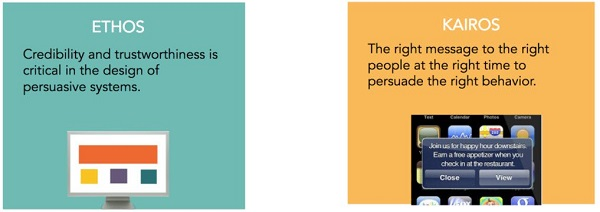ATD Blog
Designing to Persuade a Learning State of Mind
Wed Dec 13 2017

There is increasing focus on the impact of brain science on digital learning design. In an ongoing effort to learn more about how learners engage with online learning, researchers are capturing data to turn into insights about learner behavior. Designers can use these insights to find ways to trigger events in their learning solutions that will influence behavior change and lead to increased engagement and mastery.
The challenge I often have with insights gained from the many data and analytics systems is that, while we all agree that not all learners are created the same, we seem to forget that not all digital learning experiences are designed the same. Therefore, as an industry, our analysis of the data about learner behavior becomes fundamentally flawed when we are comparing learner behavior in what potentially may be poorly designed learning experiences. In short, the design might be the issue, not the learner’s intrinsic motivations.
How do we avoid this? It all needs to begin with the intent of the designer of the learning experience. This ensures that every interaction a learner has when visiting a digital learning environment has been designed to place that learner in the right learning state of mind.
Imagine the following scenario:
It’s your first day of training for your job. You arrive at the building where the class is located. Looking at the door, you realize it has a keypad that requires you to enter a security code to allow you to open the door. You quickly search through the information about your course, but can’t find the key code for the door. You notice a sign that says to go to another building for help if you’re having trouble getting in. Off you go, hoping that it’s easy to figure out who can help you get the key code. After a while, you return to the building where your course is located, new key-code in hand, and open the door. You’re finally in the building, but there aren’t any clear directions to the classrooms. After searching the halls, you find a door that leads to a hallway full of classrooms. Finally, you find the door to your class and you head inside.
If this was your experience, would you recommend this school or training facility to anyone else? Would you be in a learning state of mind? Unfortunately, this is a common experience in digital learning environments. The key code for the front door is the password, and learners who need help are often sent to a completely different site. Once they are finally logged in, most sites lack clear instructions or navigation to help them understand where they need to go next.
Now imagine this scenario:
You’re enrolled in an online course. You’re struggling to complete an assignment before midnight. Maybe you’re a college student with a deadline, or a corporate employee who has to renew some essential job certification. You know the information you need is on your training site, but the interface is dense and confusing. You click through the site, but get lost searching for your assignment details. There’s no indication that you’re on the right path, or how far you have to go. At times like this, when there are no instructors or fellow learners to turn to for advice, it can feel like you’re lost in the woods.
In this scenario, the design of the site and the course is prohibiting you from learning. If this was your experience, would you want to come back to this site again to learn something else?
Enter Persuasive Design Strategy
It all comes down to realizing that designing digital learning is about more than just great courses. It is critical to design the full digital learning environment to be an active participant in the learning process.
Many other industries have already developed techniques for how to persuade online visitors to behave in the ways they designed for them to engage with digital content and to keep returning. This leads to the question: What can L&D professionals learn from these other industries in how to design digital spaces, and how can we apply those principles to the design of digital learning environments?
My research led me to develop what we call persuasive design strategies. PDS is an off shoot of persuasive technology or CAPTOLOGY (computers as persuasive technology), which was first articulated by B.J. Fogg, a behavioral scientist and director of Stanford University’s Persuasive Technology Lab. Fogg looked at how different mediums of digital communication such as marketing sites, e-commerce, or mobile apps use persuasive techniques to motivate visitors to buy something, lose weight, or keep playing a game.
No doubt, the term persuasion can feel out of place when discussing instructional endeavors, but it is important to note that persuasion is not coercion. In fact, persuasion has played a role in education since the days of Socrates. Persuasive design is about the intent of the designer, and that intent is guided by two overarching concepts first suggested by Fogg: Ethos and Kairos, which boil down to trust and timing (see figure below).

While I didn’t invent persuasive design, I did spend the last decade researching and testing how Fogg’s techniques can be aligned to proven instructional design strategies and user experience design methodology. The result is the development of a set of design strategies you can use to build digital learning environments. Indeed, I believe the design of the overall learning environment is just as important as the information it contains and have adopted seven strategies of PDS as guiding principles:
reduction
tunneling
suggestion
tailoring
self-monitoring
conditioning
surveillance.
The next post will take a closer look at each strategy. In the meantime, take a look at my session at ATD TechKnowledge 2018, “Reimagining the Learner Environment Through Persuasive Design Strategy,” which is part of the E-Learning track.
